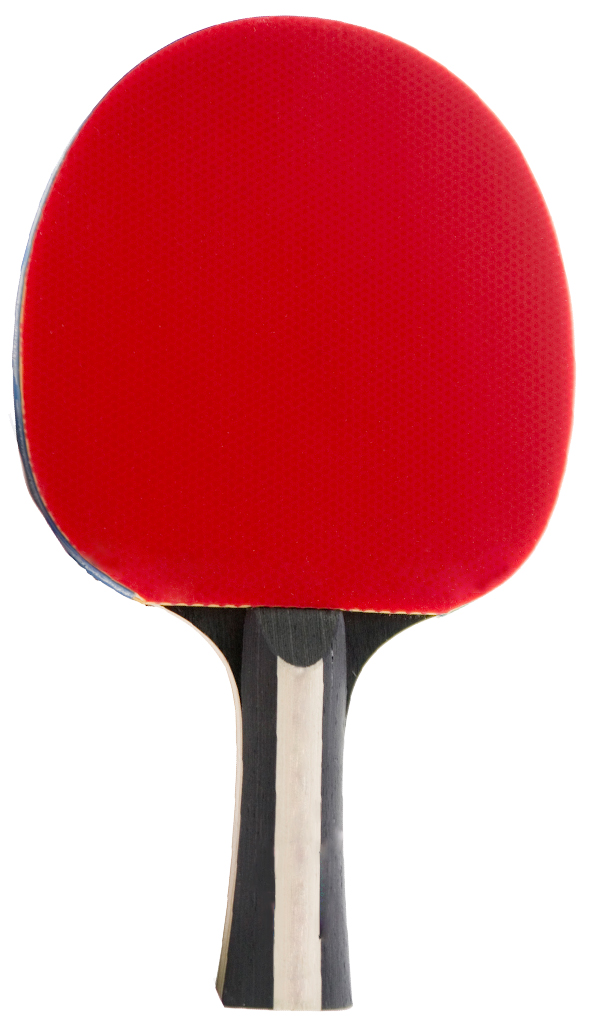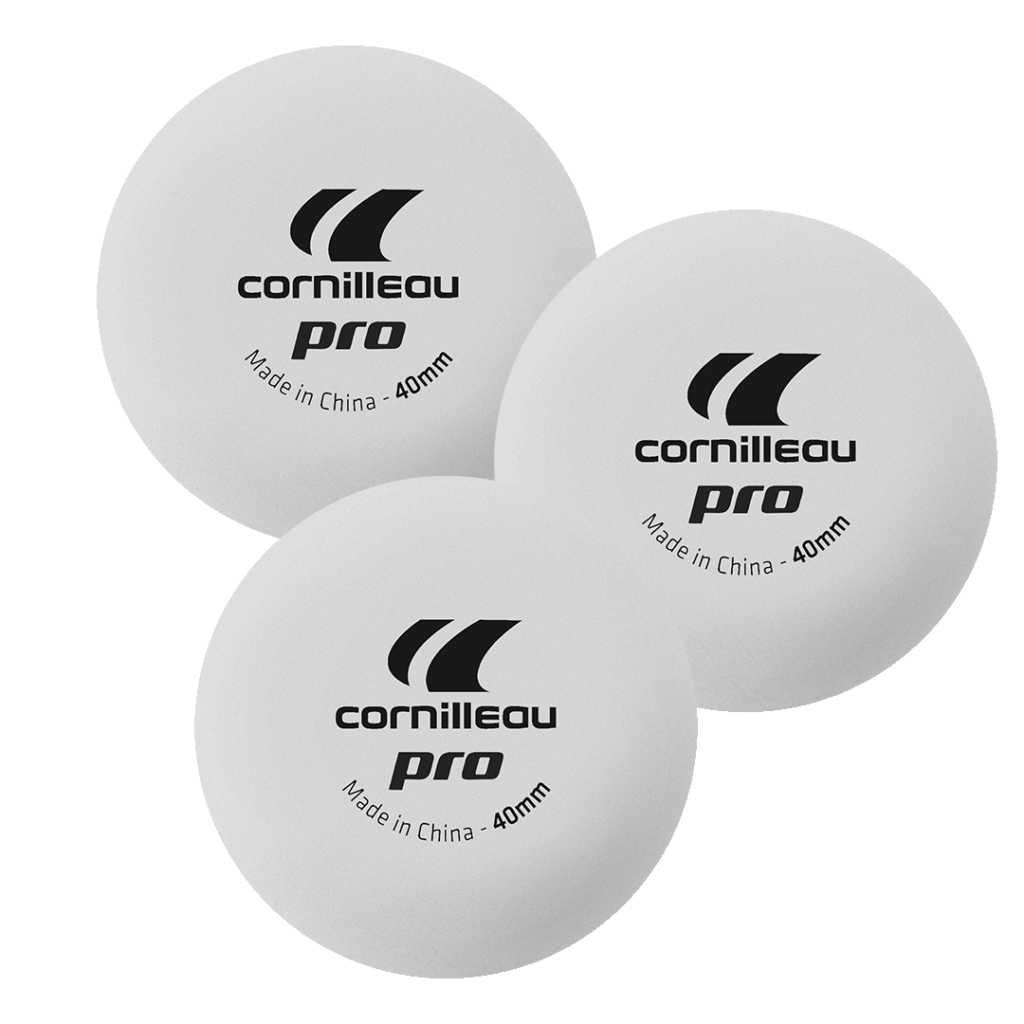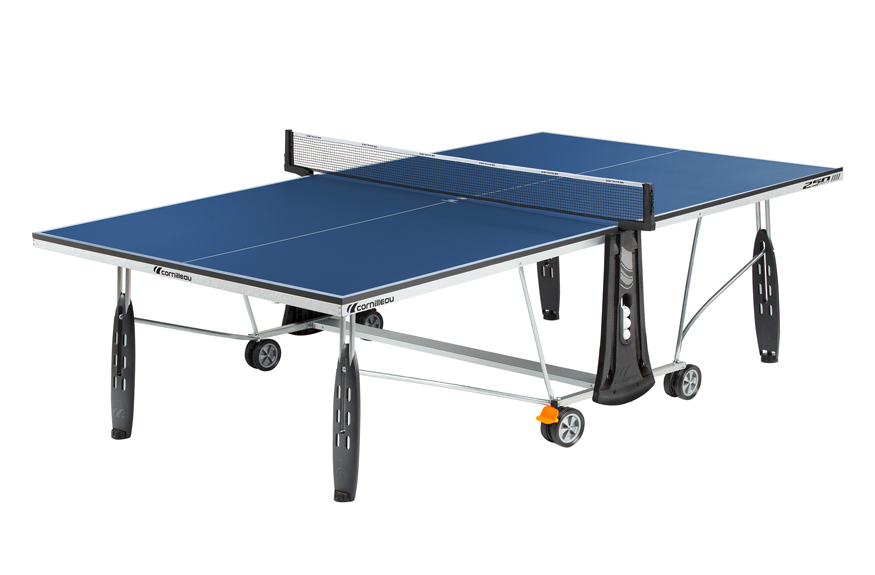Equipment guidance
If you’re enjoying playing table tennis and are ready to buy your own equipment, you might find a confusing amount of information out there about the best bat to buy, so we’ve put together a simple guide to help.
Bats
You can be forgiven for initially feeling confused by the wide range of table tennis bats on the market, but the type of bat you chose can have a major impact on your game. You can have different surfaces on each side of the bat for varying amounts of spin (including nullifying it) or speed. For example, a player may have a spin-heavy rubber on one side of their bat, and no spin on the other side. The player can flip the bat in play for different types of returns!
We recommend that a beginner should choose a ‘ready-made’ bat to get their game underway, although others would advise against this. At this early phase, having fun should be the most important element, not being stressed about getting the ‘right’ bat, or being bankrupt by it! You can get bats as cheaply as £1.99.
Choosing a custom made bat will definitely raise your playing ability though, so if you feel that you are now ready to take your game to the next level do some research online on different blades (the wooden bit) and rubbers (the rubber bit that goes over the wooden bit!). These will range hugely in cost and spec, but the following will give you an idea of what to look for.
The ‘Blade’ is the bat without the rubber. 85% of the blade must be natural wood and can be of any size, shape or weight providing the surface is flat and rigid. Thin layers of carbon fibre are one substance that has been successfully used in blades, adding to the speed, but also to the cost.
In general, blades can be categorised as Defensive, All-round, Offensive, Carbon, Soft Wood and Hard Wood.
We recommend beginners use an ‘All-round’ blade (which will usually be made of 5 plys) so they achieve good control. Most top players tend to choose All-round or Offensive blades, with faster rubbers to give them speed and feel.
ll rubbers have a smooth side and a pimpled side and most, although not all, are designed to be used in conjunction with a layer of sponge which is bonded to the rubber during manufacture.
Rubber needs to be changed much more regularly than blades, but this depends on the amount you play and the level you wish to play at.
Beginners should use REVERSE RUBBER (see description below) with a 1.5mm sponge, to enable them to develop all of the basic strokes.
There are lots of different types of rubbers on the market including:
REVERSE RUBBER – By far, the most used rubbers are reverse rubbers. With reverse rubbers, the playing surface is flat and attached to a layer of sponge. Various combinations of sponge and the playing surface are available which will affect the spin, speed and control of the rubber. Generally soft sponge rubbers are slower than hard sponge rubbers.
SHORT PIMPLES – pimples that face outward and are short, wide and close together. Short pimples are often used on one side of the bat, usually on the backhand to provide variation of spin and speed with the normal sponge rubber; assist with block and counter attack strokes and to help players with weaker backhand
LONG PIMPLES – pimples that face outwards and are usually longer, thinner and further apart than short pimples. Long pimples will often reverse the spin and so can be very difficult to play with and against and for this reason we do not recommend them for beginners!
ANTI-SPIN – reverse rubber with little friction on the surface so that they do not impart any spin on the ball and negates spin
Rubber should be maintained by:
- Cleaning with water at the end of practice
- Having a cover for your bat to keep it ‘dust free’
- Keeping the bat out of direct sunlight and high temperatures

Balls
Balls range in quality from one star (practice balls) to three star (competition quality). The official ball colour is white or orange. The official ball size is 40mm.
Ever since the game was first invented, the search for the perfect table tennis ball has been on. Early versions of the game were unsuccessful because they were unable to find a suitable ball, and it was only when the celluloid ball was first introduced in the early 1900s that the game became popular. But, the search has continued for a better ball.
Following trials in the late 1990s, the rules were amended and the size of the ball was changed from 38mm to 40mm to try and slow the game down, which would mean that the length of the rallies would increase and in turn would make the game more appealing to television viewers.
Historically, table tennis balls were made from celluloid. However, the International Table Tennis Federation (ITTF) introduced plastic balls at all ITTF tournaments from July 1, 2014, with national associations around the world also adopting this change. The change reflected the fact that the manufacturing process for celluloid was inherently dangerous due to its inflammable nature, and was being banned in some countries, while transportation and storage of celluloid was also affected.
Table Tennis England recognised that there would be a transition period while supplies of celluloid balls were used up and supplies of plastic balls improved. From the start of the 2015/16 season, plastic balls have been used at all Table Tennis England events.


Tables
It’s just not table tennis without a table. There are indoor and outdoor table options, and if space is an issue table toppers and Instant Ping Pong Packs all available from online suppliers.
• A table should measure 2.74m long, 1.525m wide and be 76cm high
• The ball should bounce 23cm high when dropped from a height of 30cm
• The playing surface should be uniformly dark-coloured and matt
• A wheelchair friendly table will have the legs set back at least 40cm away from each end
This range of tables will usually be called ‘recreation’ or ‘home’ tables and are ideal for casual use. They are of lighter construction and come in a variety of sizes, from full size to mini tables. These tables are perfect for ‘pop up’ sessions or for use where space is limited.
All tables can be folded up for storage, however you should consider the storage space you have available and who will be performing the task.
Rollaway tables are designed to be moved easily. They fold in the middle and have large wheels for easy movement, and this can usually be done by one person. These tables require bigger storage space as a result of this functionality.
Some of these rollaway tables offer ‘playback’ functionality. This is where one half of the table can remain upright so that a single player can practice their returns.
Other tables, typically the heavyweight competition tables, come in two halves and have legs that fold into the frame. Each half can be rolled upright into storage using the small wheels built into the frame at the net end. Two strong people are required to put up or breakdown one of these tables. They are however more compactly stored than the rollaway tables.
We recommend the rollaway design if the tables you use will need to be moved often. Bear in mind that the complex engineering of the tables generally means that it’s worth avoiding the budget versions of these tables to ensure good durability.
These are very simple to fit to your table.
An alternative to purchasing an actual table tennis table is to use the tables you already have. The Instant Ping Pong pack contains a roll net which can clip to almost any flat surface. It takes seconds to set up. The set also contains bats and balls, plus a set of play cards to get your table tennis session started.
The versatility of the pack means that you can play table tennis almost anywhere.

